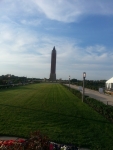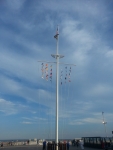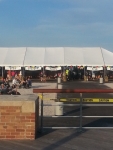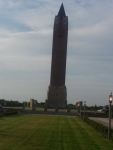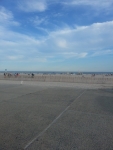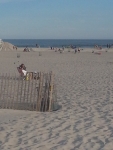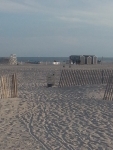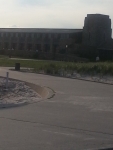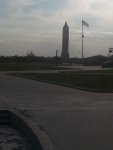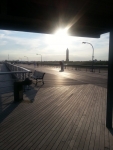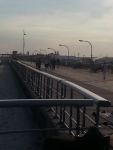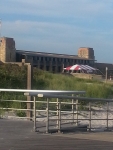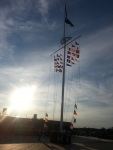The park was created during Robert Moses‘ administration as President of the Long Island State Park Commission (for which he wrote the legislation in 1923) as part of the development of parkways on Long Island. Moses’ first major public project, Jones Beach State Park, is considered to be one of the most beautiful parks in the world,[8] free from housing developers and private clubs, and instead is open for the general public. Several homes on High Hill Beach were barged further down the island to West Gilgo Beachto make room for the park.
When Moses’ group first surveyed Jones Island, it was swampy and only two feet above sea level; the island frequently became completely submerged during storms. To create the park, huge dredgers worked day and up to midnight to bring sand from the bay bottom, eventually bringing the island to twelve feet above sea level.[9] Another problem that followed was the wind—the fine silver beach sand would blow horribly, making the workers miserable and making the use of the beach as a recreational facility unlikely. Moses sent landscape architects to other stable Long Island beaches, who reported that a beach grass (Ammophilia arenaria), whose roots grew sideways in search of water, held dunes in place, forming a barrier to the wind. In the summer of 1928, thousands of men worked on the beach planting the grass by hand.[10]
Built in the 1920s, many of its buildings and facilities feature Art Deco architecture. In the center of a traffic circle that he planned as a terminus for the Wantagh State Parkway, Moses ordered the construction of an Italianate-style water tower to serve as a central feature of the park.
The park opened to the public on August 4, 1929, along with the causeway that provided automobile access from the mainland of Long Island. The causeway was the first section in what was to become the Wantagh State Parkway.[11] Unusually for the time, no carnival type amusements were allowed in the park area.



 You must
You must 